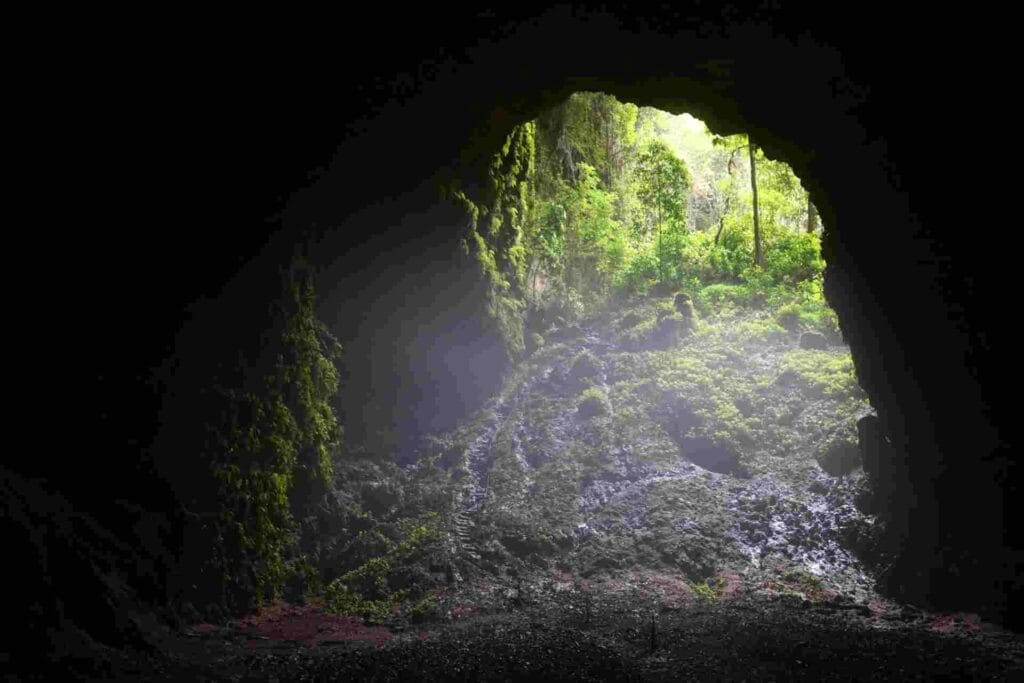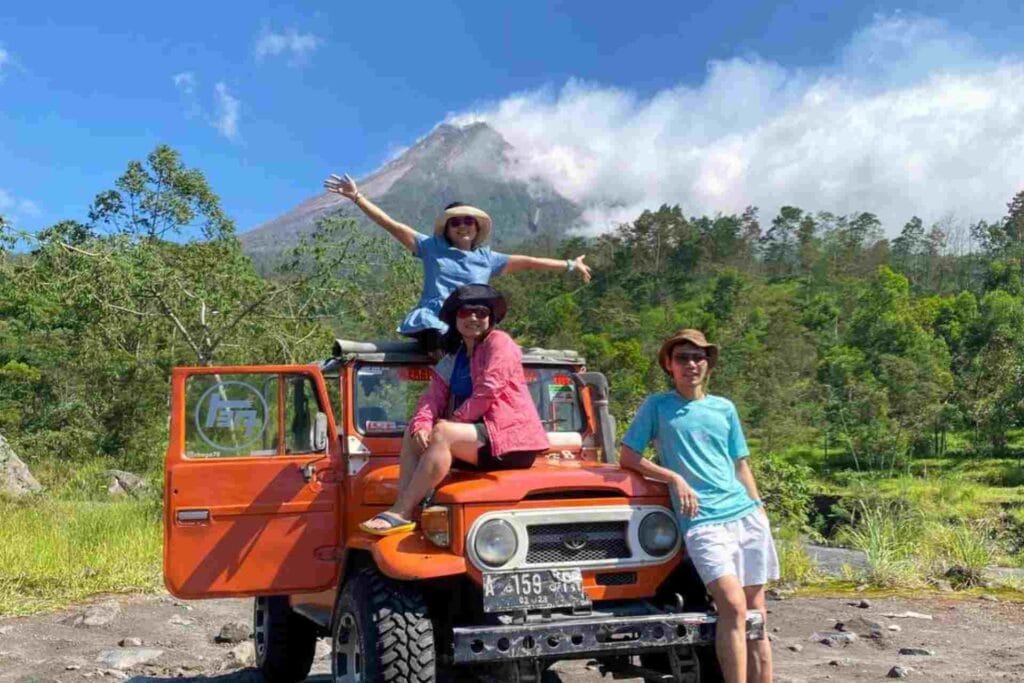1. Visit Borobudur Temple
The dry season offers the best chance to see Borobudur Temple, the world’s largest Buddhist monument from Setumbu Hill. Behind Mount Merapi, the ancient stupas of Borobudur glow in golden light, creating a magical and spiritual atmosphere that draws travelers from all over the world.
Morning mists often linger in the surrounding valleys, making the view from Setumbu Hill or the top of the temple even more surreal. Booking a sunrise tour ensures you beat the crowds and enjoy the peaceful serenity of this UNESCO World Heritage Site.
2. Explore Prambanan Temple in the Evening
While Borobudur is best in the morning, Prambanan Temple shines in the late afternoon and evening. The dry season means you can explore this 9th-century Hindu temple without worrying about rainstorms.
As the sun sets, the towering spires of Prambanan turn a beautiful shade of orange, offering great photo opportunities. In the evening, don’t miss the Ramayana Ballet — an open-air performance combining traditional dance, music, and Javanese storytelling, set against the dramatic backdrop of the temple itself.
3. Enjoy at the Beach Yogyakarta
Dry season is the perfect time to visit the southern beaches of Gunungkidul, known for their rugged cliffs, white sand, and turquoise waves. Many of these beaches are remote and require a short hike or off-road drive, which becomes easier and safer when the paths are dry.
- Indrayanti – clean, family-friendly, and lively
- Pok Tunggal Beach – quiet with iconic cliff views
- Timang Beach – famous for its wooden gondola and lobster warung
- Wediombo Beach – great for sunset and tide pools
4. Go to Jomblang Cave Adventure
Jomblang Cave is one of the most unique natural attractions in Yogyakarta. During the dry season, the conditions inside the cave are safer and the light rays shining through the cave roof — known as the “light — are more likely to appear clearly.
This experience involves rappelling down into a vertical sinkhole and trekking through a hidden forest underground. It’s a once-in-a-lifetime adventure that’s both thrilling and photogenic. Just make sure to wear clothes you don’t mind getting muddy!

5. Hike Mount Merapi or Take a Jeep Lava Tour
Mount Merapi is one of the most active volcanoes in Indonesia and a powerful presence near Yogyakarta. In the dry season, the views from Merapi’s slopes are clear, and the Lava Jeep Tours are more comfortable and exciting.
Choose between morning, afternoon, or even sunrise jeep tours, which take you to Merapi’s post-eruption landmarks like the Alien Stone, Bunker, and destroyed villages. For more adventurous travelers, you can also book a guided sunrise hike to one of the lower peaks for panoramic views.
6. Enjoy Cultural Performances and Festivals
The dry season in Yogyakarta is also a vibrant time for local festivals, traditional ceremonies, and cultural performances. With clear weather, many of these events are held outdoors in temple courtyards, palace grounds, or open stages.
Look out for:
- Wayang Kulit (shadow puppet shows) – held regularly near the Sultan’s Palace
- Art exhibitions, batik fairs, and gamelan concerts – in cultural centers like Taman Budaya or UGM
Ask your hotel or tour guide about current events during your visit — many are open to the public and free to attend.
7. Village Tours and Local Workshops
Dry season is ideal for exploring Yogyakarta’s countryside and joining immersive cultural activities. A growing number of village tourism programs offer chances to learn local crafts and enjoy slow-paced travel.
Some great options include:
- Batik and pottery workshops in villages
- Cycling tours through rice fields and rural neighborhoods
- Borobudur countryside tours with stops at coconut sugar makers, tofu factories, and traditional houses
- Visiting farming communities during planting or harvest season
These experiences are great for families, solo travelers, or anyone who wants to meet locals and support sustainable tourism.
8. Food Hunting: Dry Season Specials
Yogyakarta’s culinary scene thrives year-round, but the dry season makes it easier to explore street food, night markets, and outdoor warungs. You can comfortably sit outside without worrying about sudden rain.
Don’t miss:
- Gudeg – the city’s iconic jackfruit stew
- Bakmi Jawa – Javanese-style noodle soup cooked on charcoal
- Sate Klathak – minimalist lamb satay grilled on skewers of iron
- Jadah Tempe – a local snack from Kaliurang perfect for cool mornings
- Wedang Ronde – warm ginger drink with glutinous rice balls, especially nice on cool dry evenings
For foodies, a guided night food tour is a great way to try multiple dishes in one evening.
Tips for Traveling in Dry Season
- Book tours early for sunrise visits or cave adventures, as they often fill up during peak season
- Stay hydrated — the dry season can be hot, especially midday
- Wear sun protection — bring sunscreen, sunglasses, and a hat
- Bring a light jacket — evenings can be cool in highland areas like Kaliurang or Setumbu Hill
- Use local tour providers to access remote places easily and support small businesses
Make the Most of Your Dry Season Journey
Yogyakarta shines during the dry season — literally and figuratively. The weather is ideal for exploring temples, natural wonders, beaches, and traditional villages without interruption. Whether you’re seeking adventure, culture, or culinary delights, there’s something for every traveler in this diverse and welcoming destination.
Plan ahead, travel early in the day, and stay curious. The dry season gives you the freedom to experience the best of Yogyakarta in comfort and style. Book your tours in advance, bring your camera, and get ready for a journey filled with wonder and warm Javanese hospitality.



